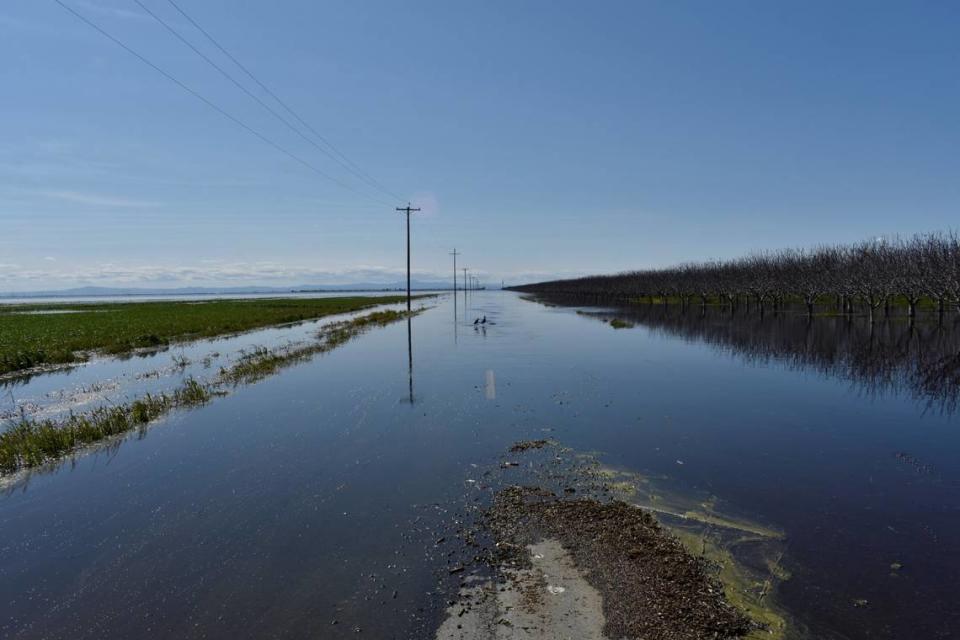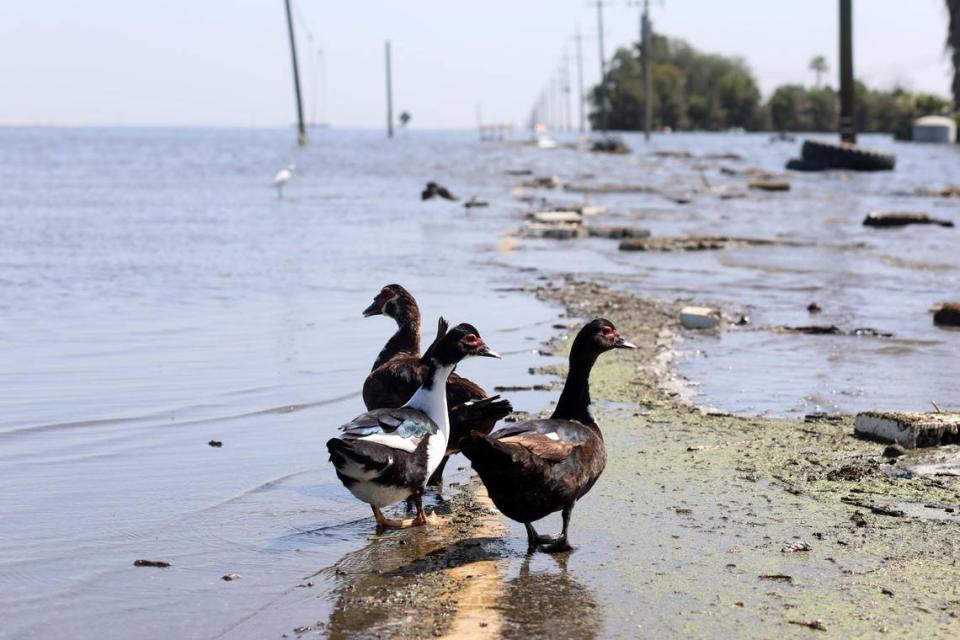Avian botulism found in Tulare Lake in central California as water stagnates and heats
In March, heavy rain flooded canals and broke levees in Tulare County, leaving thousands of acres under water as the once-dry Tulare Lake reemerged from the farmland in central California.
With the water came birds.
And now avian botulism in two dead birds, according to the state’s Department of Fish and Wildlife.
The bacteria, which is not a threat to humans, was detected in two carcasses — a mallard duck and a white-faced ibis — collected from the lake and confirmed through testing, the department said in a statement Tuesday.
“These are naturally occurring events to some degree,” said Evan King, a senior environmental scientist with the department.
Outbreaks typically occur in park ponds, sewage treatment plants and rivers or creeks with shallow, pooled water, especially as the water becomes stagnant and temperatures rise.

Some 30,000 birds died in an avian botulism outbreak in Tulare Lake in 1983, but smaller events happen each year, the department said. In 2008, nearly 20 Canada geese died at a ponding basin in Fresno, which state biologists suspected as avian botulism.
“It’s very common in the Valley in the summer,” a state wildlife biologist told The Bee at the time.
The Tulare Lake area, centered around Corcoran in Kings County, is expected to attract millions of waterfowl, shorebirds and other species as fall migrations begins, so Fish and Wildlife is monitoring the situation.
They’ve assembled a team to track potential die-offs using aerial, ground and water surveys, and airboats to collect dead or critically ill birds.
Those living in the Tulare Lake Basin should report dead birds.
A reporting form is available online.
“Removing carcasses will be the first step of defense,” King said.
“We’re going to do everything we can to lessen the number of overall bird deaths caused by this illness.”


